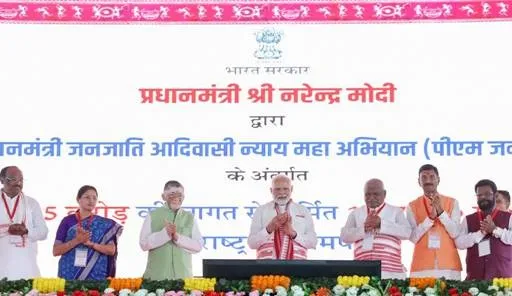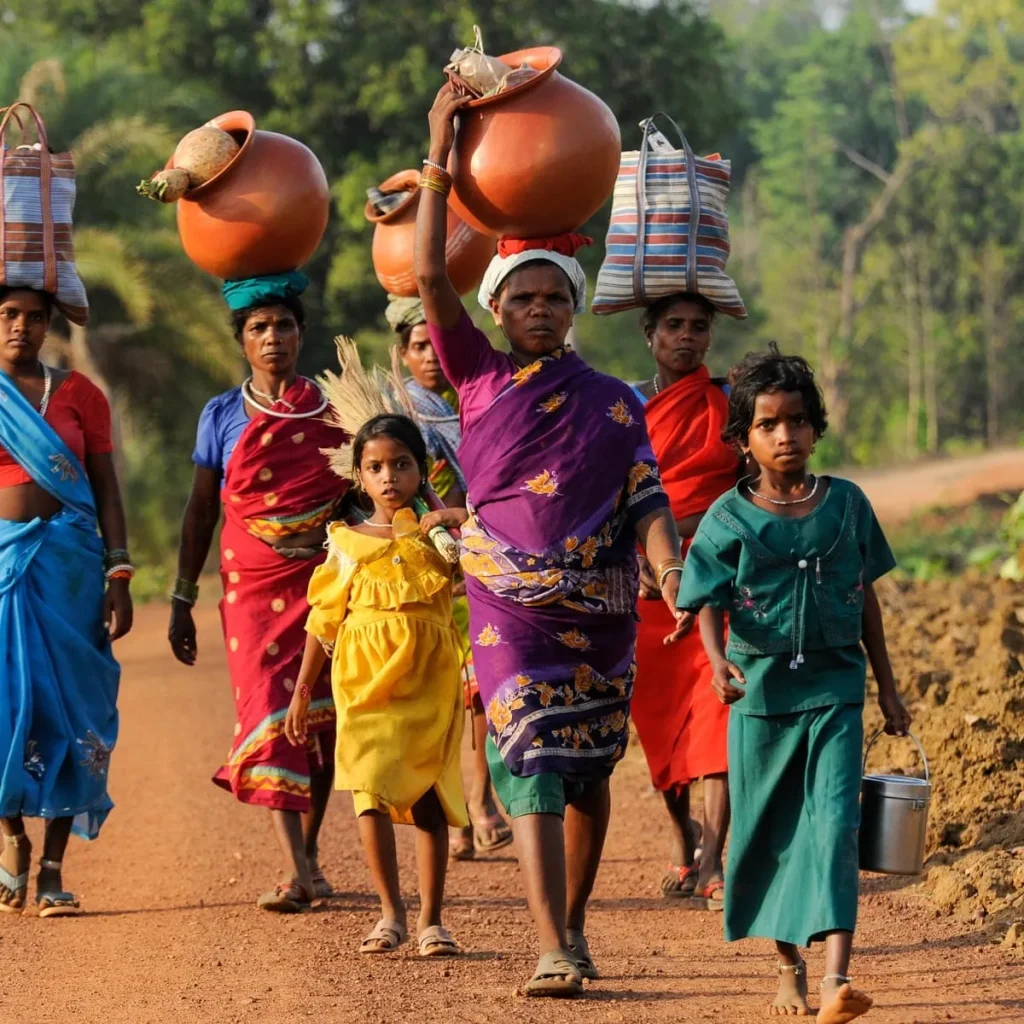Prime Minister Narendra Modi has introduced the Dharti Aaba Janjatiya Gram Utkarsh Abhiyan (DAJGUA), focusing on the development of tribal communities across India. The scheme targets over 63,000 tribal-majority villages within Aspirational Districts and has a budget of ₹79,156 crores. This initiative aims to enhance social infrastructure, health, education, and livelihoods through a series of coordinated interventions from 17 government ministries over the next five years.

Key Interventions and Budget Allocation
The Abhiyan emphasises 25 key interventions to ensure comprehensive and sustainable development for more than 5 crore tribal residents across 549 districts and 2,911 blocks in 30 states and Union Territories. The scheme is designed to fill critical gaps in essential services and improve the overall quality of life for tribal populations.
Expansion of Eklavya Schools
As part of the initiative, the Prime Minister inaugurated 40 new Eklavya Model Residential Schools (EMRS) and laid the foundation stone for an additional 25 schools, with a total investment of around ₹2,834 crores. This expansion aims to provide quality education to tribal children, enhancing their opportunities for future success.
Infrastructure Development Projects
The Prime Minister also announced various development projects under the Pradhan Mantri Janjati Adivasi Nyaya Maha Abhiyan (PM-JANMAN), worth ₹1,365 crores. This includes the construction of 1,387 km of roads, 120 Anganwadi centres, 250 multi-purpose centres, and 10 school hostels. These projects are expected to significantly improve infrastructure and support the livelihoods of tribal communities.
Commitment to Eklavya Schools
With the inauguration of the latest EMRS schools, a total of 74 schools have been established under the current initiative, which aims to create 440 Eklavya Schools in total. Each block with a significant tribal population will have an EMRS, ensuring access to quality education comparable to Navodaya Vidyalayas. The construction budget for these schools has been increased, with a goal to have all 728 schools operational by March 2026, benefiting around 3.5 lakh tribal students.

Significant Growth in Educational Infrastructure
In recent years, the number of sanctioned and functional EMRS schools has dramatically increased, with a rise from 167 sanctioned schools in 2013-14 to 708 in 2024-25. The recurring cost per student has also grown significantly, reflecting enhanced quality and resources dedicated to tribal education.
The Dharti Aaba Janjatiya Gram Utkarsh Abhiyan represents a major step towards the holistic development of tribal communities in India. By focusing on education, infrastructure, and social services, the scheme aims to empower tribal populations, ensuring they benefit from the country’s growth and development initiatives.
